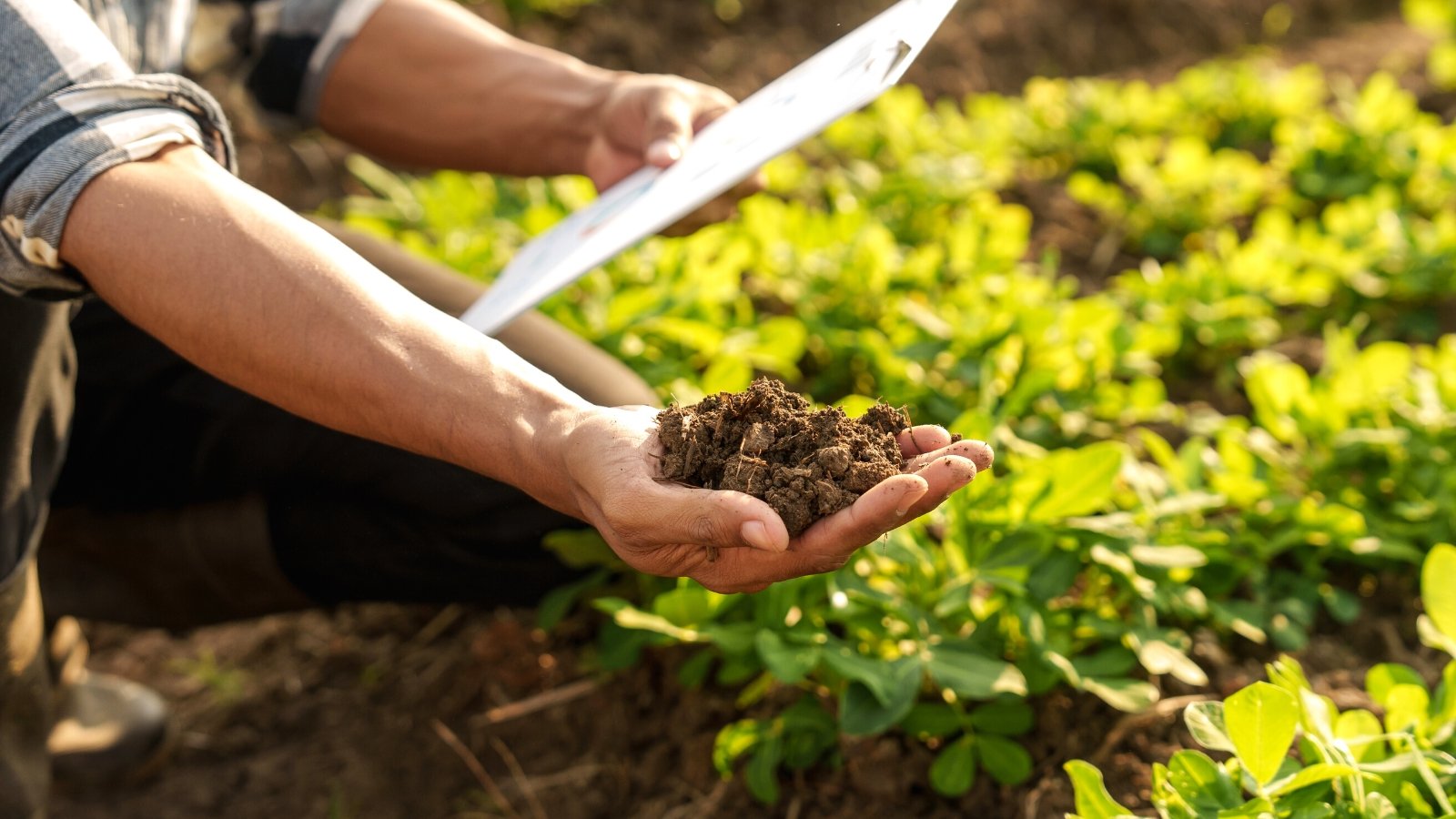[ad_1]
From seaside sand to pottery clay, there is a huge spectrum of assorted soil varieties found on the earth’s ground. Determining your yard’s soil kind can help you appropriately amend and put collectively the underside for varied species of vegetation.
Fortunately, this doesn’t require any fancy devices or scientific equations. All you need are your fingers, just a bit background data, and a few soil samples from spherical your yard.
Let’s dig into 7 straightforward steps for determining your soil kind and appropriately amending it for the vegetation you might want to develop.
How Do I Determine My Soil Type?


The only technique to resolve your soil kind is by grabbing a handful and feeling it in your bare fingers. Whether it is vitally dry, add plenty of drops of water to get an accurate analysis.
Analyze the feeling of the particles in your hand and try and roll it proper right into a ball. Whereas every soil has a particular mineral make-up, these elementary ideas can help you identify the overall kind:
- Sandy varieties might be gritty and fall by way of your fingers. It doesn’t roll proper right into a ball.
- Heavy clay feels sticky and retains a wide range of moisture. It holds its kind when rolled.
- Silty varieties can actually really feel floury and simple when dry and slippery when moist. It’ll preserve some kind in a ball, nonetheless merely breaks apart.
- Loam feels rich, delicate, and crumbly. It’ll sort a lightweight clumpy ball. Loam consists of roughly a superb mixture of sand, silt, clay, and pure matter like compost.
7 Quick Steps to Set up Your Type
Soil kind is printed by the proportions of sand, silt, and clay. These different-sized mineral particles resolve the bodily building, which impacts how water, nutritional vitamins, microorganisms, and plant roots work along with the below-ground ecosystem.
As an illustration, the rich loam most desired by gardeners is technically an equal proportion of sand, silt, and clay, with quite a few pure matter. Loam is true for a lot of greens and herbs because of it provides a nice steadiness of attributes. Water drains by way of loam faster than clay, nevertheless it retains moisture for longer than sand. Loam moreover has higher nutrient content material materials and
Adjust to these steps to decide your soil kind and appropriately amend it for varied vegetation:
Meet the Particles
Sooner than you dig into categorizing your soil, it helps to know the three completely totally different particle programs: sand, silt, and clay!
Don’t be intimidated by the scientific language— these particles are simple to actually really feel and see with the naked eye! Soil texture is simply the proportions and sizes of these mineral particles throughout the ground. Completely totally different percentages of each particle resolve completely totally different textures which is likely to be used to classify the type.
Sand
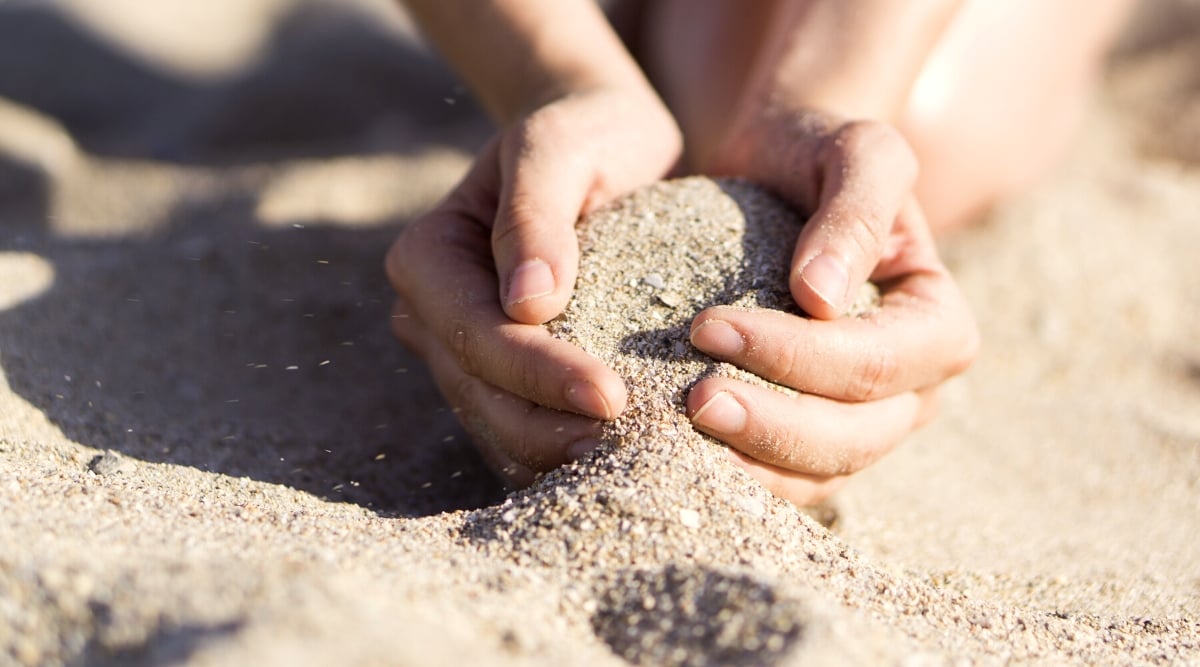

Sand particles are 0.05 mm to 2 mm in measurement. It’d seem counterintuitive, nonetheless sand is unquestionably the largest of the particles. One thing higher than sand (2 mm diameter) is taken into consideration good gravel. Whereas we typically contemplate sand as a result of the tiniest grains on the seaside, each particle of sand is taken into consideration a big throughout the microscopic soil world.
If we’ve been to enlarge soil particles to a further conceivable measurement, sand particles might be like bowling balls. Take into consideration sandy soil as quite a few bowling balls stacked on prime of each other. There might be quite a few air in between each bowling ball. That is called pore home. The huge amount of pore home between sand particles is strictly why water and air transfer by way of sand so quickly.
When ocean waves transfer up on a sandy seaside, the water drains shortly considerably than puddling up. Equally, heavy rain throughout the desert might set off a brief lived flash flood, nonetheless the water drains and dries up super quickly. This speedy drainage is because of big pore areas between the desert sand particles.
Sandy soil:
- Heats up quickly (extreme explicit heat functionality)
- Drains water very fast (doesn’t puddle up)
- Retains few nutritional vitamins (leeches fertilizer quickly)
- Doesn’t preserve water for very prolonged (dries out quickly)
Pure 100% sand is unusual in a yard setting nonetheless is often current in deserts, dunes, and seashores. Nonetheless, mixes of sand in soil are fairly widespread. As an illustration, Florida, Georgia, Michigan, New Hampshire, and Nebraska have big areas of sandy soil.
A texture with higher than 85% sand particles might be considered sandy soil. If there’s a superb distribution of sand and clay, it may very well be often known as a sandy loam. We’ll cowl further of the texture triangle below.
Silt


Silt is a medium measurement particle ranging from 0.002 mm to 0.05 mm in diameter. We principally uncover silt on the bottom of stream beds and river banks. Silt is smaller than sand nonetheless larger than clay.
It’s powerful to see a single silt particle with the naked eye, nonetheless big portions of silt are simple to find out by their slick, muddy texture in wetlands, streams, and river deltas. These particles are made up of good rocks and minerals that sort a dusty, slippery film.
Silt is predominantly formed from erosion. As water, wind, and ice placed on away at rocks, the tiny fragments are scraped in opposition to the sides of various rocks, grinding smaller and smaller as they switch by way of the panorama. Silt usually accumulates in deposits alongside areas the place water flows, significantly the place river deltas transfer into larger our our bodies of water.
The medium-sized pore home of silt means it doesn’t drain water as quickly as sand, nonetheless it doesn’t preserve onto moisture for as long as clay. Silt affords a very good amount of air circulation and water retention with out getting super slowed down by heavy rainfalls like heavy clay.
Silty soil:
- Feels slippery when moist
- Isn’t grainy or rocky
- Warms up sooner than clay (nonetheless not as shortly as sand)
- Drains water sooner than clay (nonetheless doesn’t dry out as fast as sand)
- Holds cheap portions of water
- Is frequent in river deltas and streambanks
The pure silt found on river bottoms and in wetlands consists of 80-100% silt particles. Silty soil is far more frequent, with blends of 50-70% silt with totally different particles. It is considered pretty fertile and useful for rising a wide range of crops. Gardeners and farmers rising alongside the Mississippi River Delta are definitely conversant on this sort.
Clay


The third and smallest particle is clay. Constructive clay particles are smaller than 0.002 mm in diameter and cannot be seen with the naked eye. Even some microscopes are unable to focus on a single clay particle. These microscopic particles sort crystalline constructions throughout the earth and are principally current in soil horizons, volcanic deposits, and areas the place rock has weathered away.
Keep in mind our bowling ball (sand) and golf ball (silt) analogy? Take into consideration clay as stacks of teeny tiny sheets of paper. These particles are more likely to occur in very tightly packed sheets with practically no home between them. Due to this clay will get so soggy and waterlogged when it’s moist.
There could also be little or no pore home for water to empty by way of the “sheets.” Clay holds onto water longer than each different particle, and when it turns into oversaturated, the water sometimes puddles on the ground because of there’s nowhere left for it to empty. When it dries out, clay tends to crack.
Clay soils:
- Warmth up very slowly (generally tend to stay coldest throughout the spring)
- Drain water the slowest
- Keep onto water the longest
- Merely grow to be oversaturated
- Crack when dry
Pure clay or heavy clay soils embody 60% or further of clay particles. This kind is kind of widespread in gardens world huge and, sadly, is among the many hardest to develop vegetation in. The tightly packed clay particles can merely grow to be compacted and concrete-like, making it very powerful for plant roots to push by way of.
You in all probability have clay soil, you will instantly know just by trying to dig into it alongside along with your hand. It could be very exhausting and thick when moist and actually cracked and brittle when dry. Be taught on to search out out your soil’s clay functionality and how one can improve the texture.
Loam


We hear the phrase “loam” throughout the yard world moderately quite a bit, nonetheless what does it really suggest? Loam has an practically even mixture of sand, silt, and clay particles, plus essential portions of pure matter. Pure matter is decomposed plant or animal residues corresponding to compost, manure, or mulch.
When even percentages of sand, silt, and clay mix with pure matter, it creates that luscious, crumbly, rich soil all of us dream of gardening in. Loams occur naturally in humus-rich topsoil of grasslands, along with a number of the Midwestern USA.
Sadly, many loamy soils are literally depleted or eroded attributable to large tools tillage and synthetic chemical use. Thankfully for you, you can rework practically any yard soil into loam with the proper modification described below!
Purchase Samples
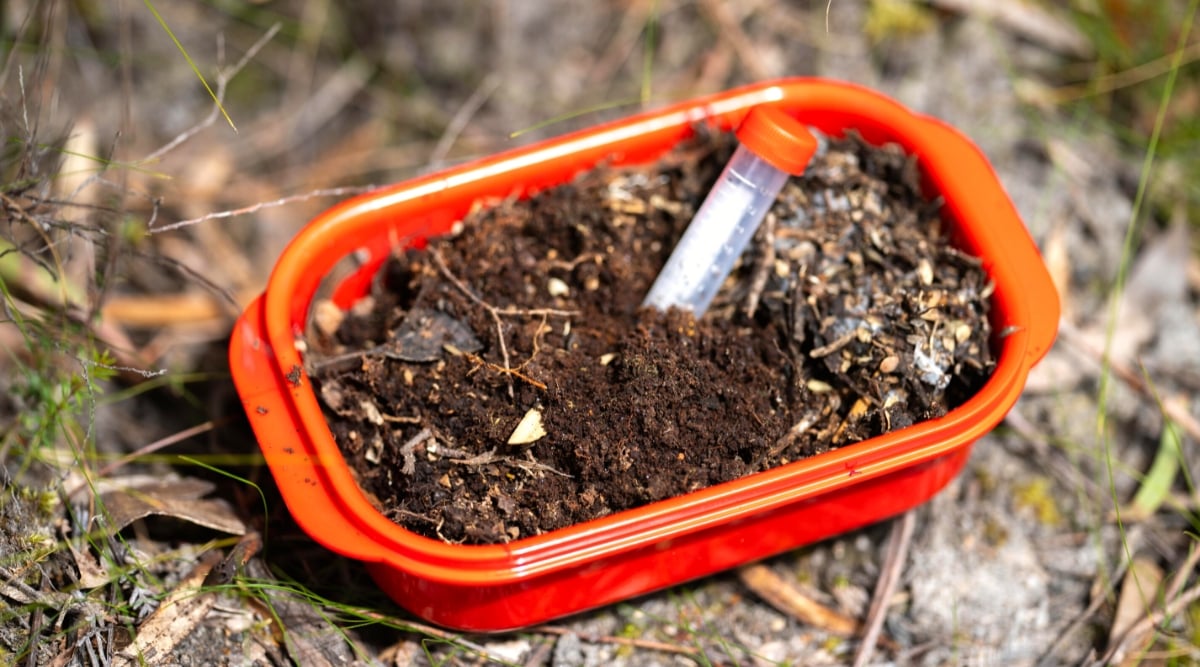

To search out out your soil kind like an expert, first, you’ll wish to collect samples. It’s essential to analyze a handful of samples from each completely totally different mattress or rising zone in your panorama. Just because there’s heavy clay in a single part of your yard doesn’t suggest it’s going to be the an identical all over the place. Soils can differ dramatically all through a 100-square-foot area. Massive changes in texture are generally attributable to historic glacial till or totally different erosion events that triggered an enormous tumble of soil and rocks to settle elsewhere.
The only technique to take a sample is to simply seize a handful of soil from the increased 4 to six inches. For many who repeatedly mulch the best of your beds with compost or one different pure supplies, attain down below that layer to get a further right analysis of the zone the place most plant roots develop.
This course of is completely totally different from soil testing, which entails taking a soil core or an enormous shovel full of soil and inserting it in a bag to mail to a examine center. Soil chemistry checks let you realize the macronutrient and micronutrient composition. Alternatively, this sampling methodology determines your soil kind based totally on the bodily texture. You gained’t be doing any chemical analysis.
I prefer to suggest determining the form of each mattress one after the opposite if you end up standing there considerably than gathering samples in baggage for later.
Roll It In Your Arms
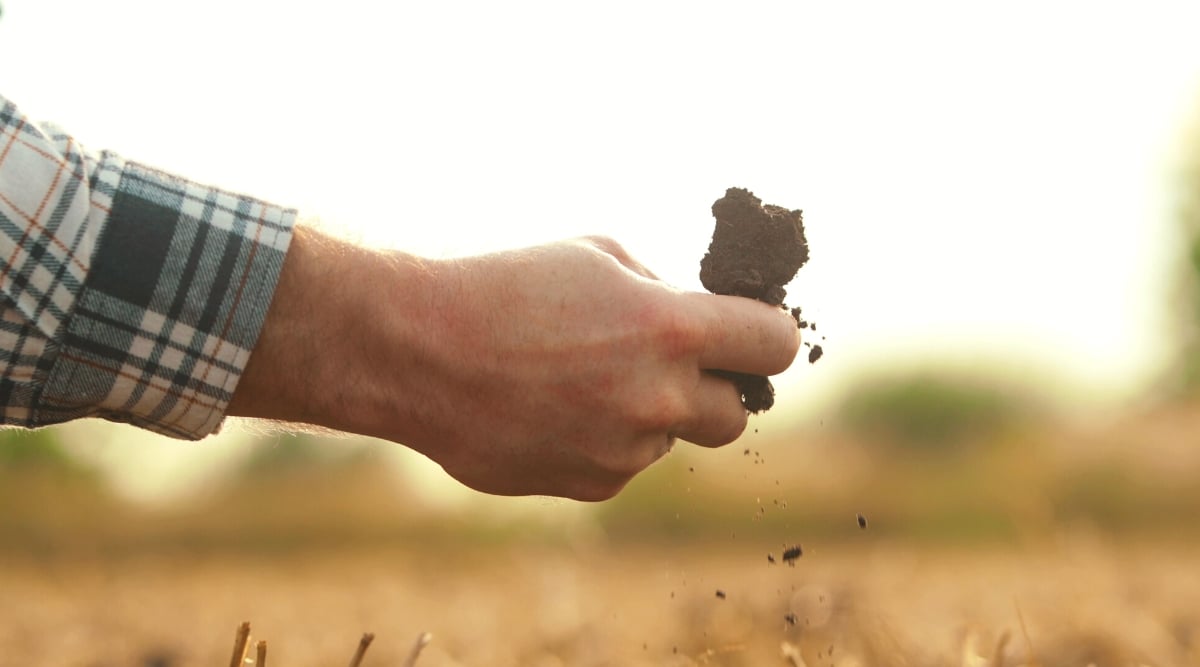

Take your handful of soil and begin rolling it spherical in your bare palm. Use your fingers to actually really feel the texture of the mud. Whether it is vitally dry, add plenty of drops of water so it is moist like a putty, nonetheless not soggy.
First, actually really feel the texture in opposition to your pores and pores and skin:
- If it feels gritty and difficult, it is extreme in sand.
- If it feels silky and simple, it is extreme in silt.
- If it feels sticky, it is extreme in clay.
- If it feels crumbly or a mixture of the above attributes, it is nearer to a loam.
Second, roll the soil proper right into a ball. Play with the ball between your fingers, or drop it on the underside to see if it holds its kind. Analyze the ball with these traits:
- If the ball sticks strongly collectively when dropped, it is extreme in clay and/or pure matter.
- If the ball sticks collectively in your hand nonetheless falls apart when dropped, it is higher in silt.
- If it gained’t sort a ball the least bit, or the ball may very well be very free and breakable, it is extreme in sand.
Try the Ribbon Verify
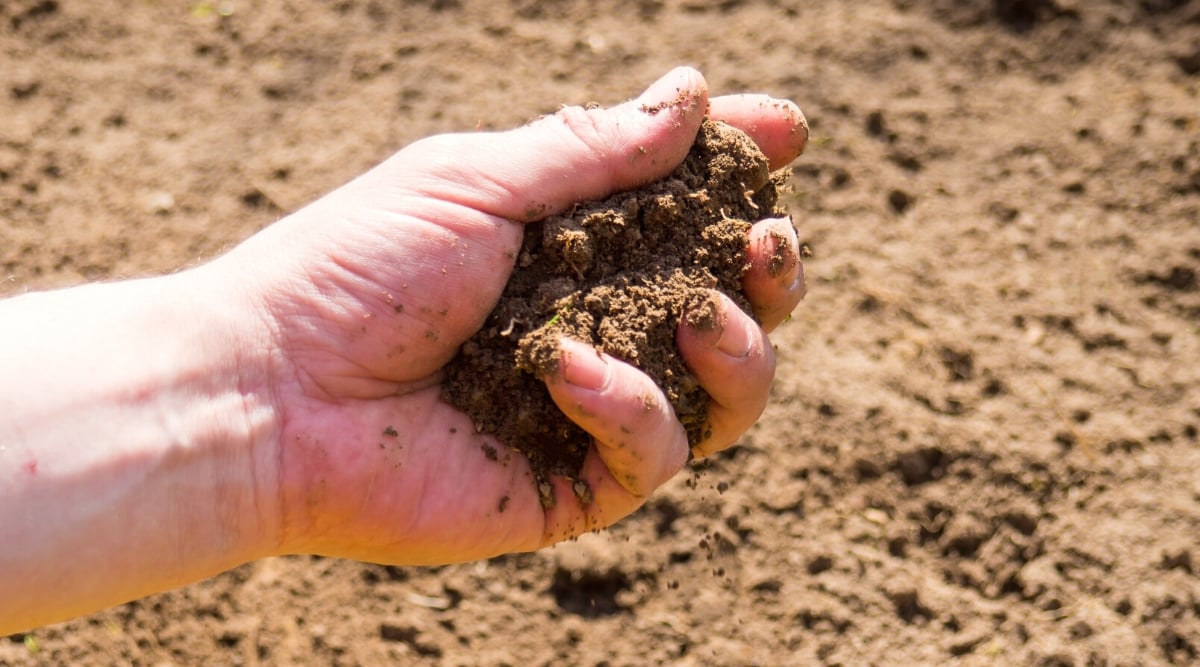

Whenever you’ve rolled the soil spherical a bit, it’s best to use this examine to get a further right considered the amount of clay. The ribbon examine is a conventional space examine utilized by scientists world huge. The premise is straightforward: higher clay soils sort longer “ribbons” when squeezed between your thumb and forefinger. The key’s guaranteeing it is moist enough to play with, like putty or dough.
To do the ribbon examine:
- Seize one different handful of soil and take away any particles.
- Frequently add just a bit water to the sample and mix it spherical in your hand.
- Moist until you can merely mould it, and it has the texture of putty.
- Squeeze the moist soil proper right into a ball in your hand.
- Use your thumb and forefinger to press the soil proper right into a ribbon.
- Begin pressing upward for the “ribbon” of soil to extend.
- Uncover if the ribbon sticks collectively and elongates or falls apart.
- If the ribbon is decrease than an inch prolonged and gained’t stick away out of your fingers by itself, it’s a sandy or silty loam.
- If the ribbon is 1 to 2 inches prolonged, it is spherical 15-30% clay, which is a loam or clay loam.
- If the ribbon is longer than 2 inches, it is higher than 40% clay and regarded clay soil.
The ribbon examine is the best technique to slim down your clay content material materials. This may present you how one can estimate the proportion of clay, which you will later use to pinpoint the soil kind.
Try a Water Pour Verify


The easiest way that water drains by way of is a crucial indicator of the soil kind and drainage functionality. Many vegetation are extraordinarily susceptible to root rot if their roots sit in waterlogged soil for too prolonged. This “unofficial” examine is one factor I sometimes used on farms and in container gardens to search out out if I wished in order so as to add further porous provides to my mix.
All you wish to do is pour a generous stream of water from a bucket or hose. Uncover what the water does on the ground:
- If it instantly drains by way of, the soil is well-draining and porous enough for a lot of yard vegetation.
- If the water puddles up for a second after which flows down inside a minute, it could use just a bit further aeration provides.
- If the water varieties a deep pool, the soil is compacted and/or extreme in clay, and it’s best to amend it with a wide range of drainage-improving provides sooner than planting.
Drainage is particularly essential in containers with succulents, cacti, tropical vegetation, or Mediterranean herbs. These vegetation really hate having “moist toes,” so it’s important for the water to maneuver quickly by way of the l profile and pour out of the drainage hole. Puddling is a nasty examine in a pot. You could improve the texture with compost, peat moss, vermiculite, or perlite.
Check the NRCS Soil Texture Triangle


The Pure Sources Conservation Service created the Soil Texture Triangle to make it easier for farmers and gardeners to find out their soil based totally on the percentages of each particle.
The entire checks from above are merely estimates to get to know your soil further intently. Use all the data you’ve gathered to look at the Soil Texture Triangle and slim down the type.
Look on the NRCS Web Soil Survey Database
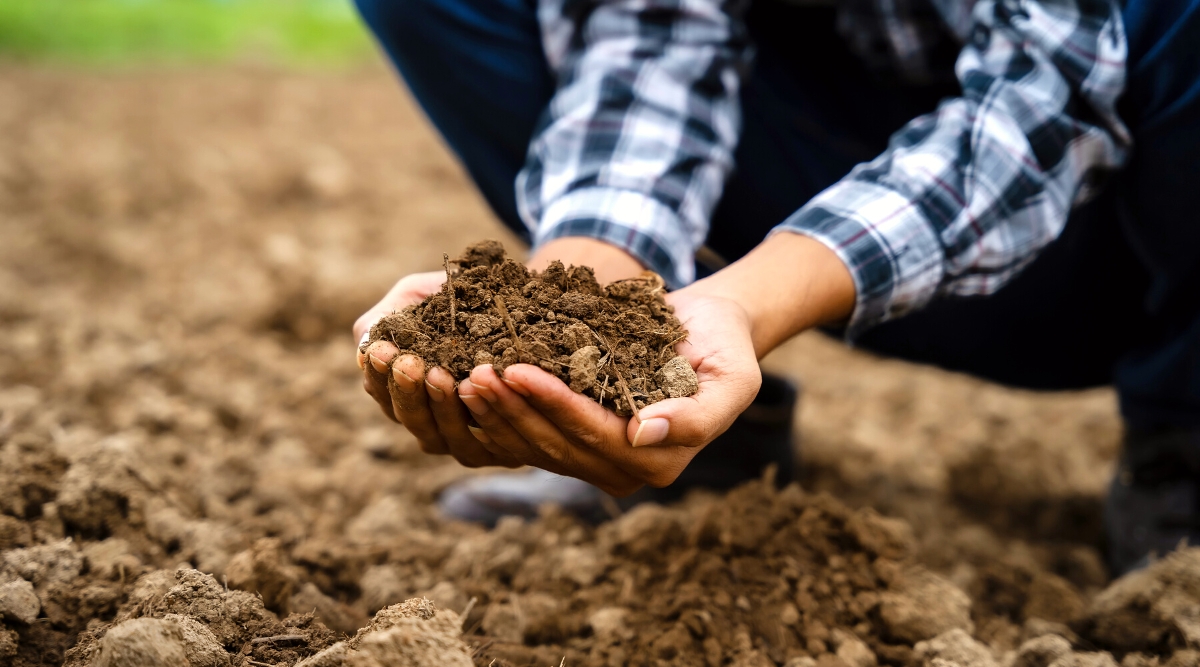

As a closing checkpoint, you can uncover the Web Soil Survey created by the USDA Pure Sources Conservation Service. This on-line map covers over 95% of America’s counties. Farmers, ranchers, and concrete planners use it to learn how soils affect completely totally different agricultural and industrial actions.
- Click on on on Soil Survey House and select your state.
- Choose your county from the drop-down area and uncover the closest soil survey area.
- Click on on the empty circle subsequent to the county determine.
- Click on on Set AOI.
- Switch to the Map tab on the prime of the show display.
- Uncover differing types labeled beneath Map Unit Title.
- For those who click on on a form, it should highlight the world on the map and describe the texture.
Alternatively, you can kind in your deal with and mark it as an House of Curiosity (AOI), then click on on on the Soil Map to see how differing types overlap in your area.
Keep in mind, your yard soil is also very completely totally different from the type on the database. This map offers you a traditional considered the classes current in your space.
Improve Texture
In case your native soil makes it powerful to yard, you are not doomed to compact clay or gritty sand endlessly. Amendments are like pure soil conditioners that improve the texture in a short while.
You could flip a yard mattress of heavy clay proper right into a rich loam by merely together with a wide range of compost and porous supplies like sand or perlite. Soils naturally take centuries of years to sort as rocks erode and residing points decompose, nonetheless you can amend your yard and improve the soil texture throughout the increased 6-12” in a short while.
Listed below are the best soil conditioners for enhancing building and effectivity:
Compost
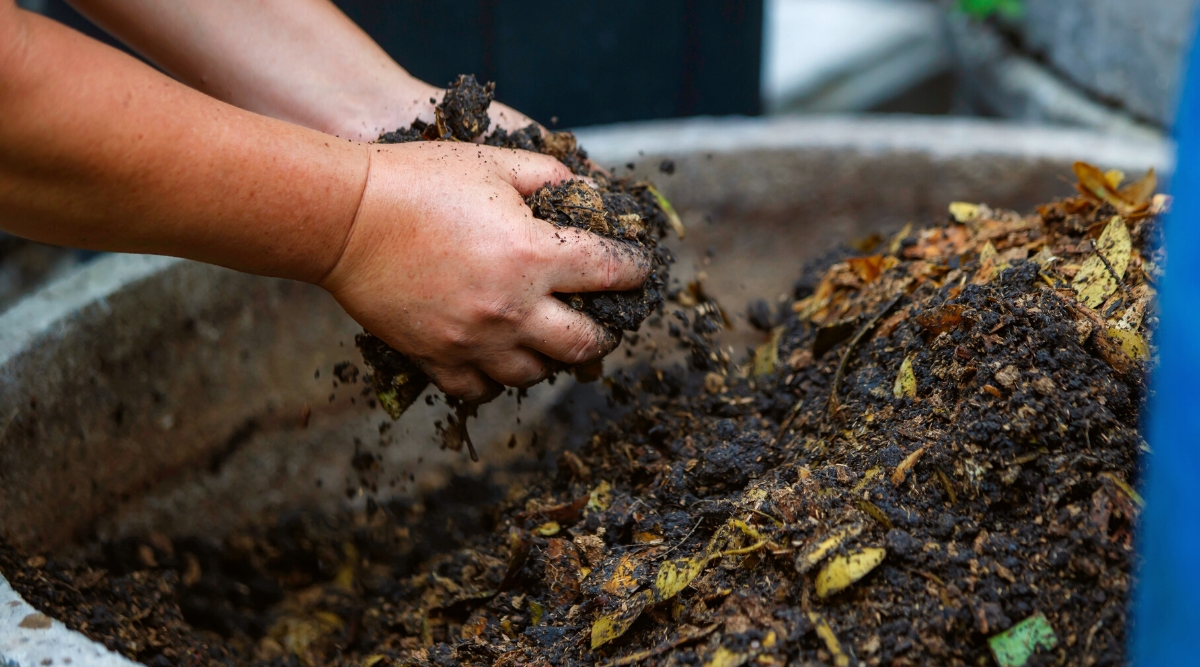

In actual fact, the gold medal of amendments goes to compost! Compost is decomposed plant and animal supplies that microorganisms rework into carbon-rich pure matter. We continuously contemplate compost as a mulch or a soil combine ingredient, nonetheless it’s best to use it to dramatically rework texture.
Compost is explicit because of it makes soil drain increased whereas moreover serving to it retain further water. Together with compost to clay soil will improve the porosity and aeration, whereas together with compost to sandy or silty soil will help it preserve onto water for longer in scorching local weather.
When sourcing compost, you will wish to look at what inputs have been used to make it. Compost made with manure might be higher in nitrogen, which may very well be good for heavy feeder crops like squash or brassicas nonetheless not so good for aromatic vegetation like herbs and flowers. Compost made with leaf litter or straw might be further carbon-rich and textured, which is sweet for longer-term water retention.
It is potential you will wish to mix in big portions of compost to begin out new beds everytime you’re first forming them. As quickly as established, you can add plenty of inches of compost to the best of your beds yearly. Some gardeners incorporate compost with a digging fork or shovel, nonetheless I select to layer it on and let the worms or microbes do the work of bringing all of it the way in which all the way down to lower layers.
Peat Moss
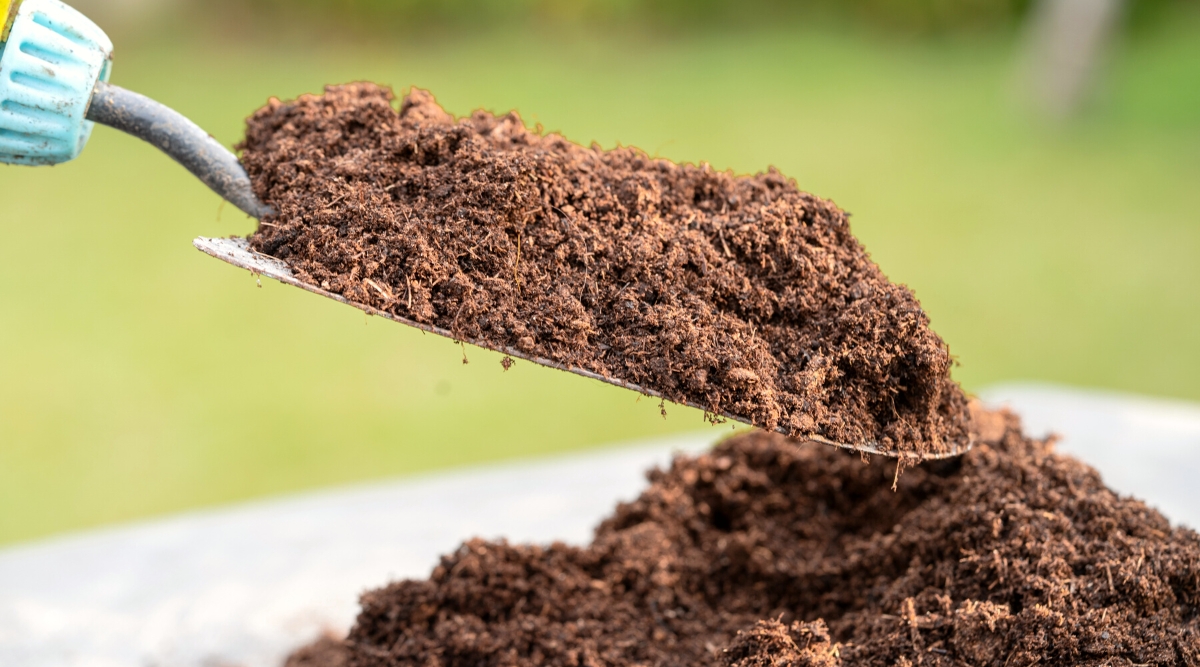

Sphagnum peat moss is earlier decomposed pure supplies harvested from peat bogs in Canada. This modification is great for elevating the water-holding functionality, so your soil stays moist for longer with out turning into waterlogged.
You in all probability have sandy soil that dries out super quickly, peat moss is an efficient option to improve water retention. Mix peat moss into the soil at a ratio of about 1:1.
Peat moss is barely acidic and likewise useful for balancing pH. It helps acidify alkaline soil by bringing down the pH.
You will have to pre-wet it because of the material is hydrophobic. Which suggests peat moss correct out of the bag will repel water. I prefer to suggest pouring the bag proper right into a bucket or wheelbarrow, wetting it down with a hose, and using a shovel.
Horticultural Sand
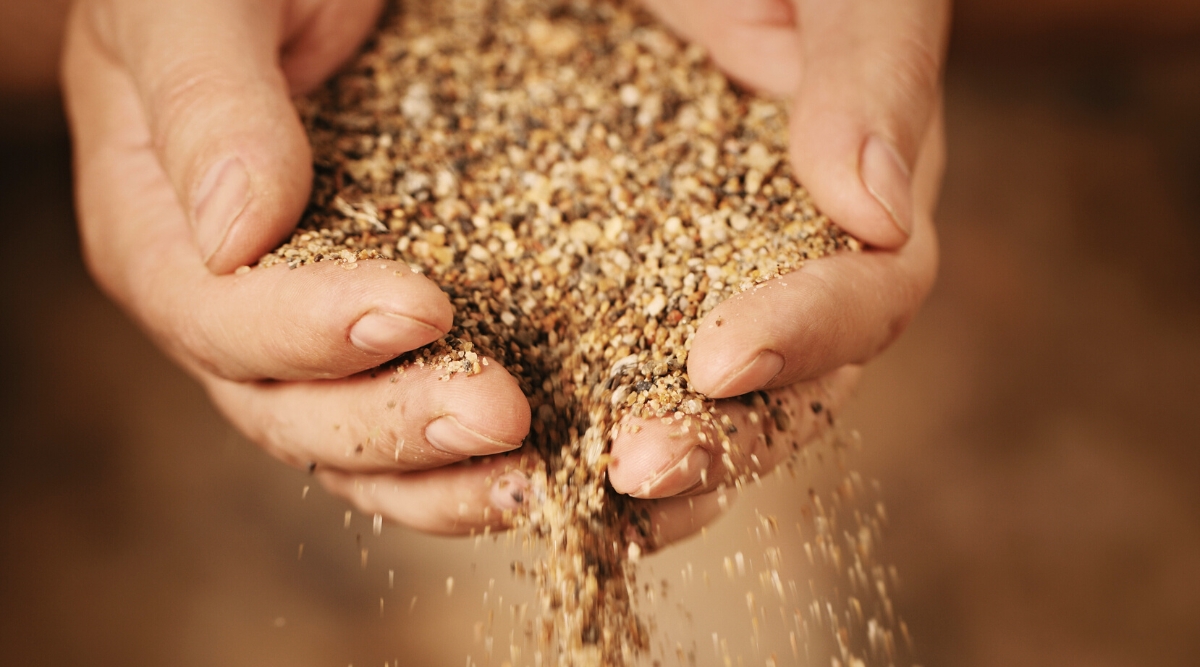

If you wish to dramatically improve drainage, that’s the modification for you! Horticultural sand or coarse sand is a mixture of crushed minerals like quartz, sandstone, or granite.
It is sometimes often known as horticultural grit, top-of-the-line provides for amending compacted or heavy clay soils to make them further acceptable for vegetation that need additional well-drained soil. In case your vegetation have struggled with root rot or totally different fungal infections, amending with sand can really help.
For many who can’t uncover horticultural sand or it is too pricey, builders’ sand might also work as long as it hasn’t been dealt with with any chemical substances.
Perlite
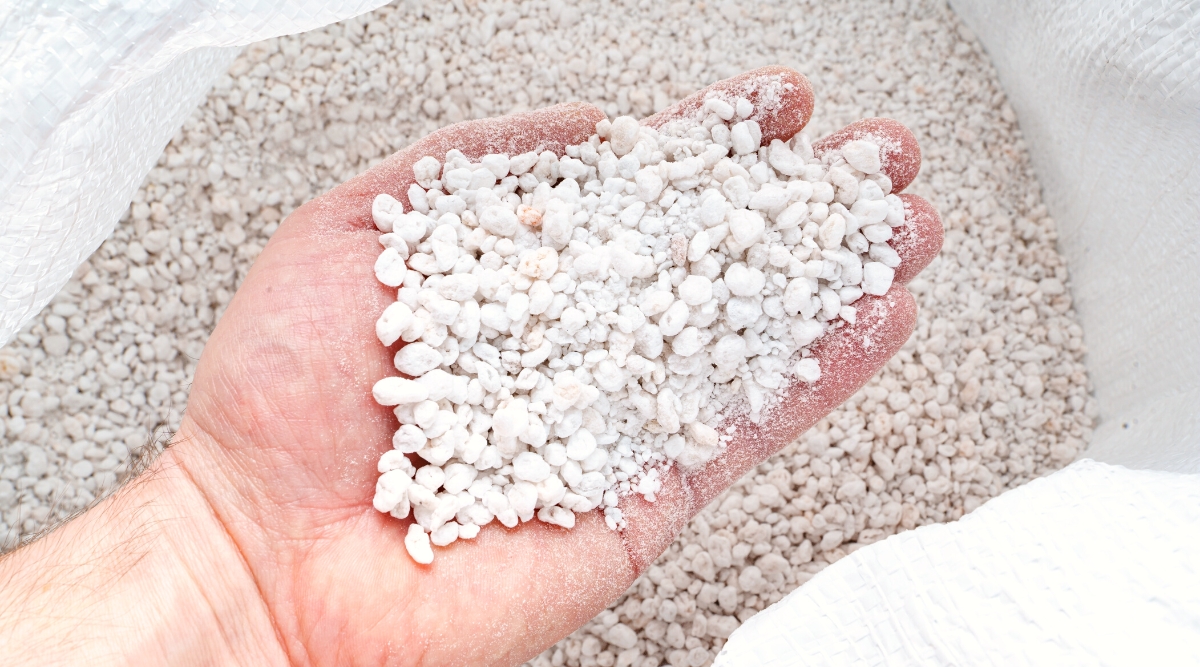

One different quick means to reinforce drainage is with perlite. That’s primarily probably the most notable aeration ingredient in potting blends. Perlite sometimes seems like little Styrofoam balls, nonetheless it is really a biodegradable supplies constituted of volcanic glass puffed at extreme heat. The puffed white balls retain some water, nonetheless largely preserve onto air and create quite a few drainage.
Perlite is awfully porous, making it good for potted vegetation, cactus or succulent beds, Mediterranean herbs, and seed starting mix. It is good for amending clay to reinforce drainage.
Vermiculite
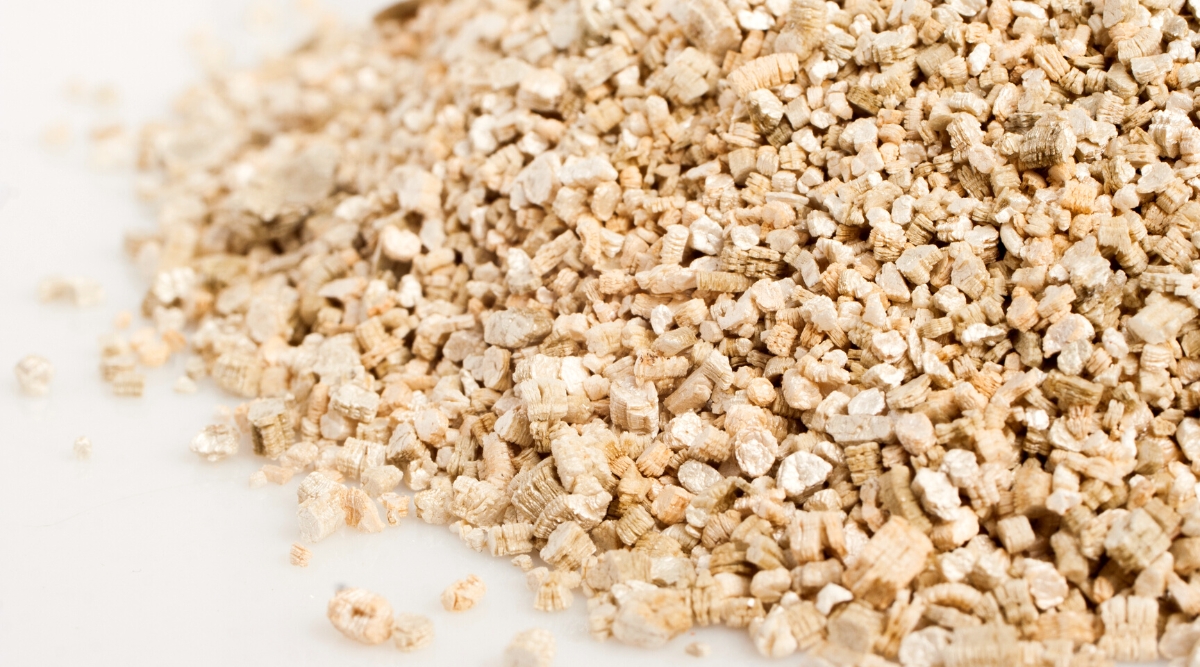

Vermiculite is compressed flakes of silicate supplies that grow to be sponge-like particles. It is sometimes used alongside perlite in potting blends, nonetheless it holds further water and has smaller objects than perlite does.
Vermiculite is biggest for together with to sandy or silty soils because of it helps them maintain damp longer so vegetation don’t dry out. Vermiculite acts like a sponge and gained’t add the an identical aeration as perlite.
Final Concepts
One of many easiest methods to get involved alongside along with your soil is to get your fingers dirty. Soil varieties are principally represented throughout the Soil Texture Triangle nonetheless can differ extensively all through a single yard. It’s essential to take samples by hand and use your senses to actually really feel the particles.
Rolling a moist soil sample proper right into a ball and seeing the way in which it holds collectively is an effective first step for analyzing your yard mud:
- One thing with extreme clay content material materials will actually really feel sticky and easily maintain in a ball.
- Soils with a wide range of silt will actually really feel straightforward and slippery, forming a free ball.
- Soils with a wide range of sand gained’t sort a ball that holds collectively.
Lastly, use the Soil Texture Triangle and non-compulsory maps to find out what soils are endemic to your space and the way in which your yard should be amended to develop crops.
- Compost improves drainage, aeration, moisture retention, and nutrient richness.
- Peat moss improves water retention.
- Sand improves drainage and aeration.
- Perlite improves drainage and aeration.
- Vermiculite improves water-holding functionality.
[ad_2]
Provide hyperlink
